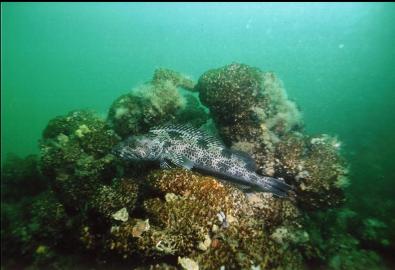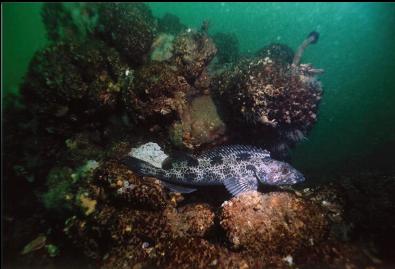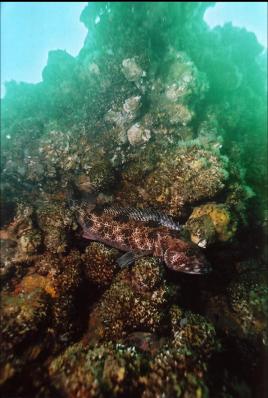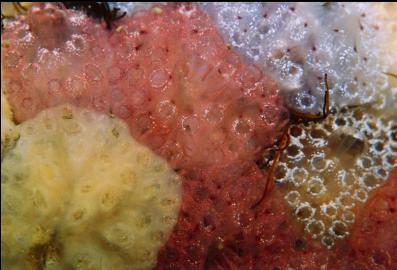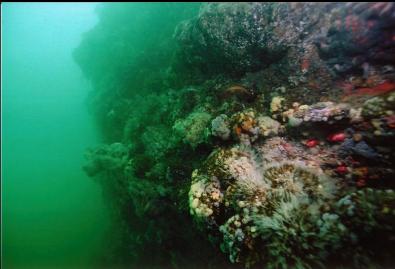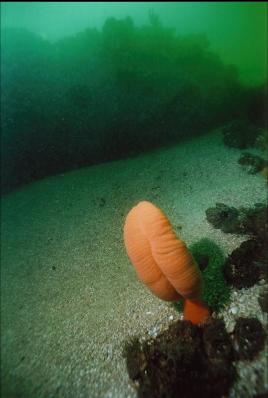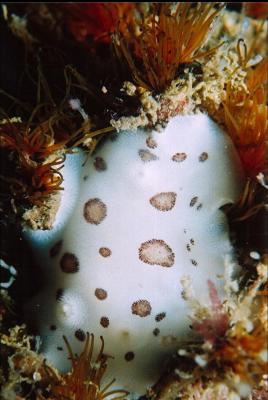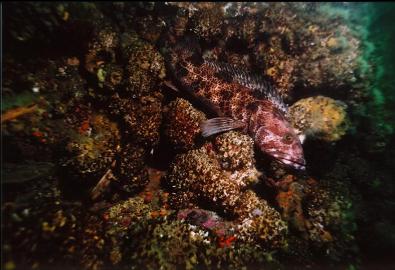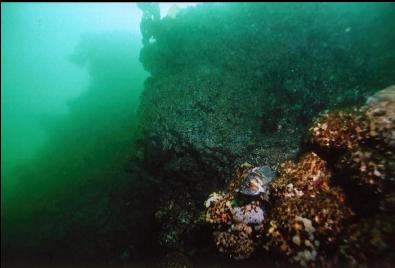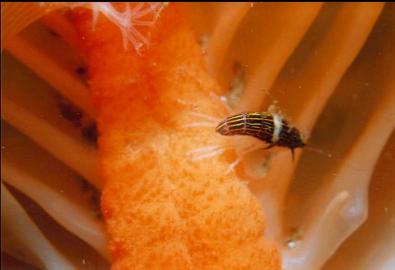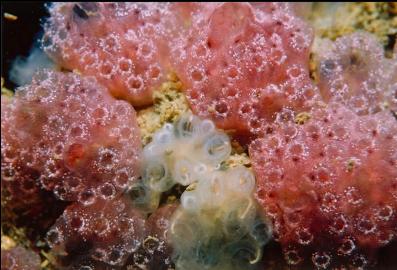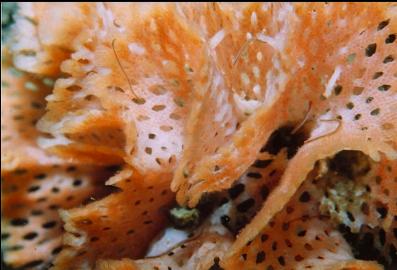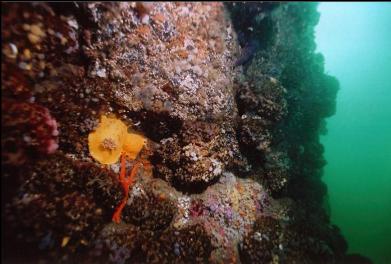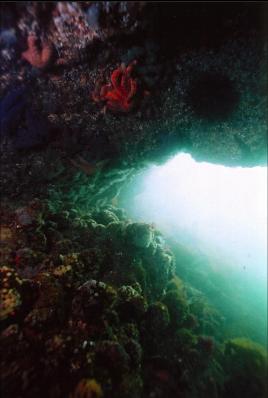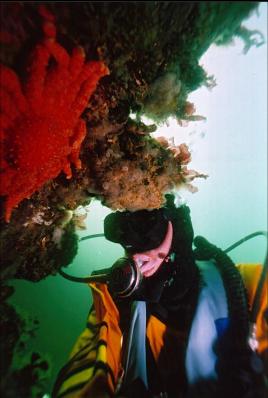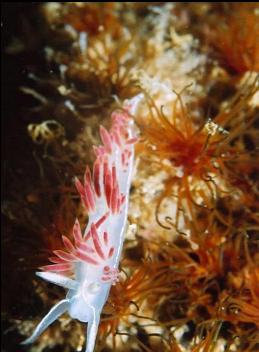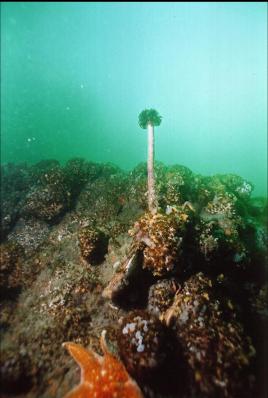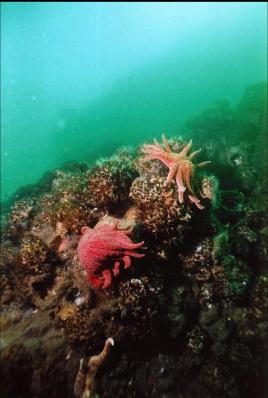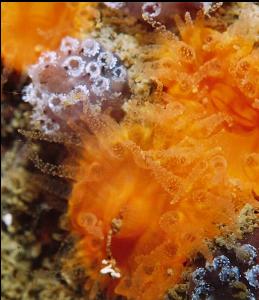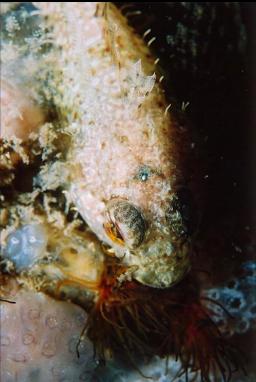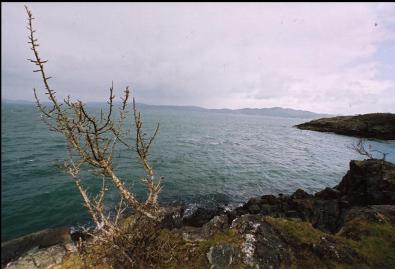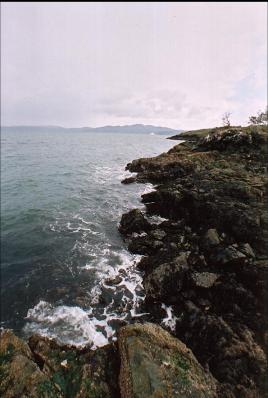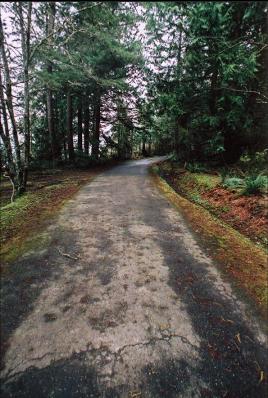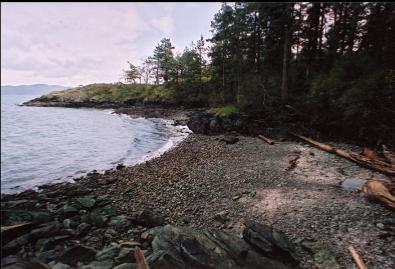This place was the main reason I came to Saltspring. It's in Ruckle Park on the South-East corner of the island. If you've ever taken the ferry between Vancouver and Victoria in summer, you probably passed the dry-grass slope covered with tents. I went in mid-March, 2005. I drove to the end of the road to the "day-use" parking area. From there, there was a paved trail leading down to the shore at the point. There was a barrier blocking access to cars. There is a nearby beach, but it's shallow and out of the way of the current. I put on all my gear and walked down to the point. The distance is a bit less than 1/2 a kilometer on a map. It may seem like a long hike, but it wasn't that bad. If you've ever made it out to the end of the Ogden Point breakwater, you'll have no problem here. When you get to the end of the trail, there are a few picnic tables and a choice of two beaches, one to the left and one on the right. I suggest using the one on the right as an entry point. I took a quick look underwater around the left-hand beach and while there was a decent amount of life (kind of like the shallows at Ogden Point), You might as well start at the really good stuff. On the right-hand point of the right-hand beach, a wall dropped immediately. This wall was completely covered with the biggest clumps of cemented tubeworms I've ever seen. Several kinds of tiny, multi-coloured tunicates were clustered on top of the tube worms. This was probably the most colour and variety I've ever seen 10-20 feet deep. Visibility was around 20 feet. Several species of crabs, tiny sculpins, and sea stars were piled on top of the other life. Lingcod guarding eggs were everywhere. Unlike the Northern end of Saltspring where the rocks were sandstone, here they were igneous like those in the Victoria area. There were several overhangs and deep cracks. Some of these overhangs were more like caverns. One deep crack was blocked off by a solid-looking crab trap wedged in the middle of the entrance. This wall ended about 40-50 feet deep and then there was a sandy/rubble slope with huge boulders covered with those cemented tube worms and more lingcod, kelp greenlings and copper rockfish. There were lots of sea pens in the sand. They ranged in size from 1 inch to almost 2 feet tall. I swam farther along the wall and it went deeper (I went 80 feet deep). There were still monster overhangs, but it seemed like there was less invertebrate life. There were actually a few patches of bare rock. I could feel the tug of current here ( I was diving about an hour before slack), so I ascended back up to the tube worm and tunicate jungle. I thought it strange though, that I didn't see any anemones (except for a single white plumose) on the entire dive. I've never seen anything like this ecosystem. -Definitely worth seeing if you're the type that notices invertebrates.


